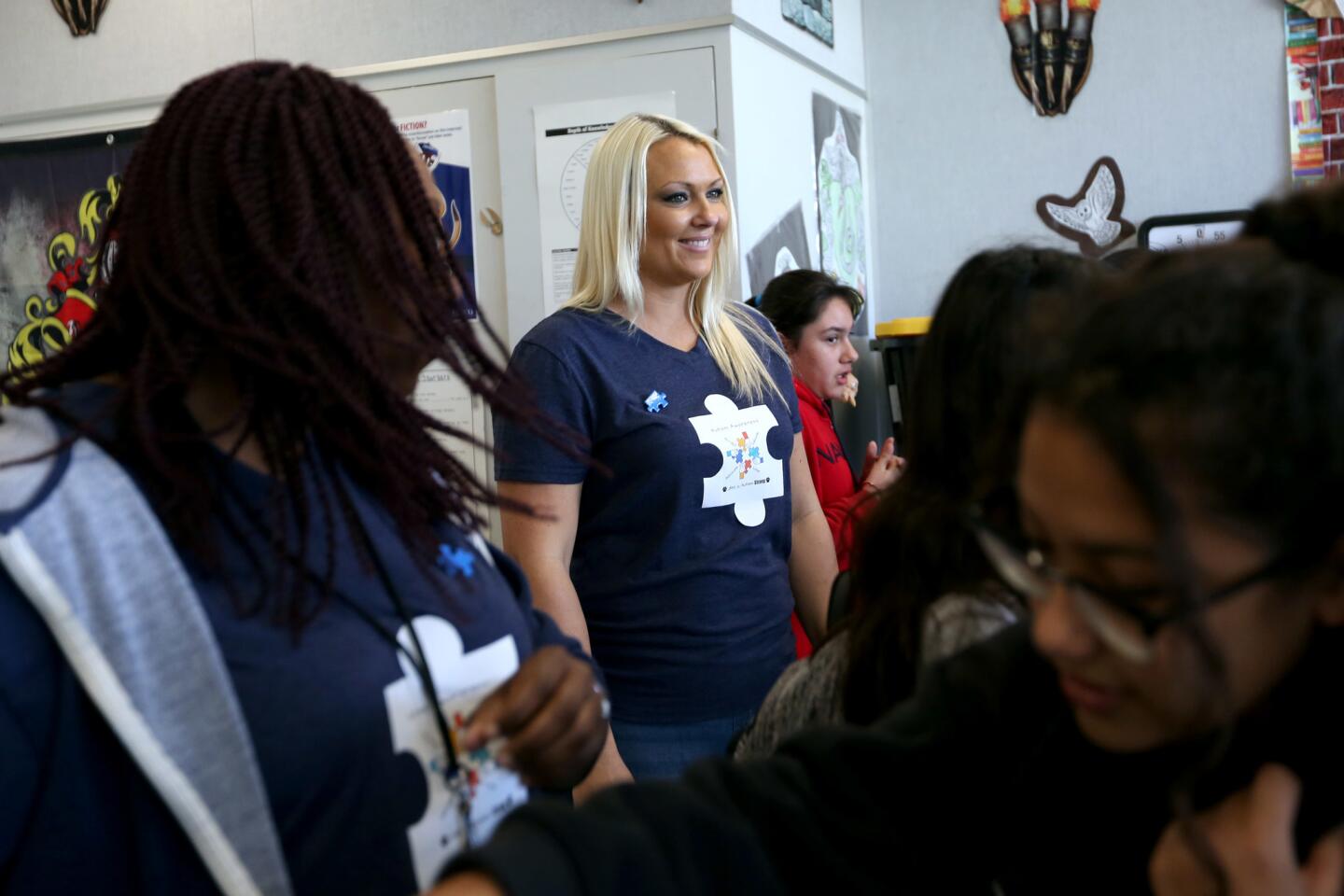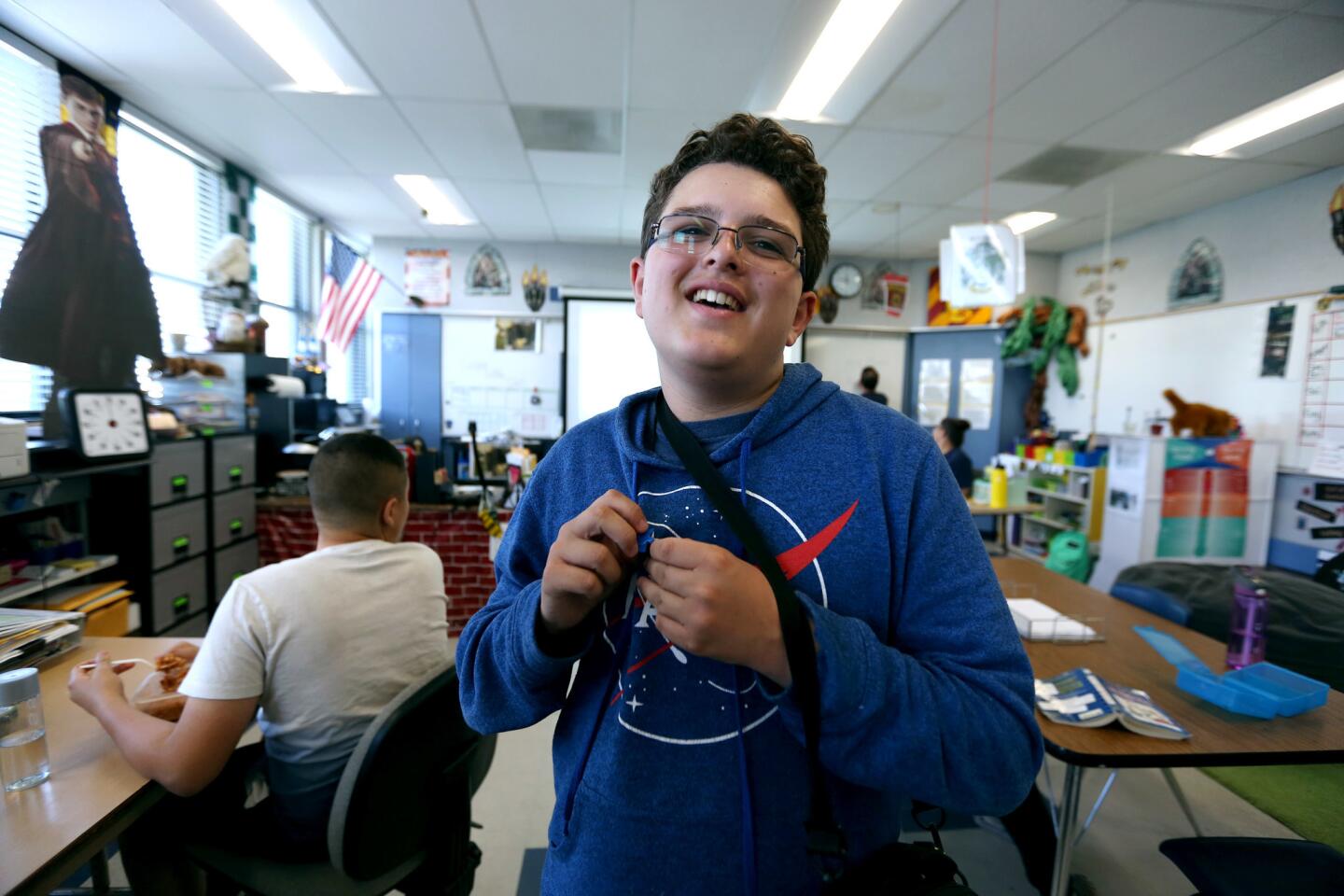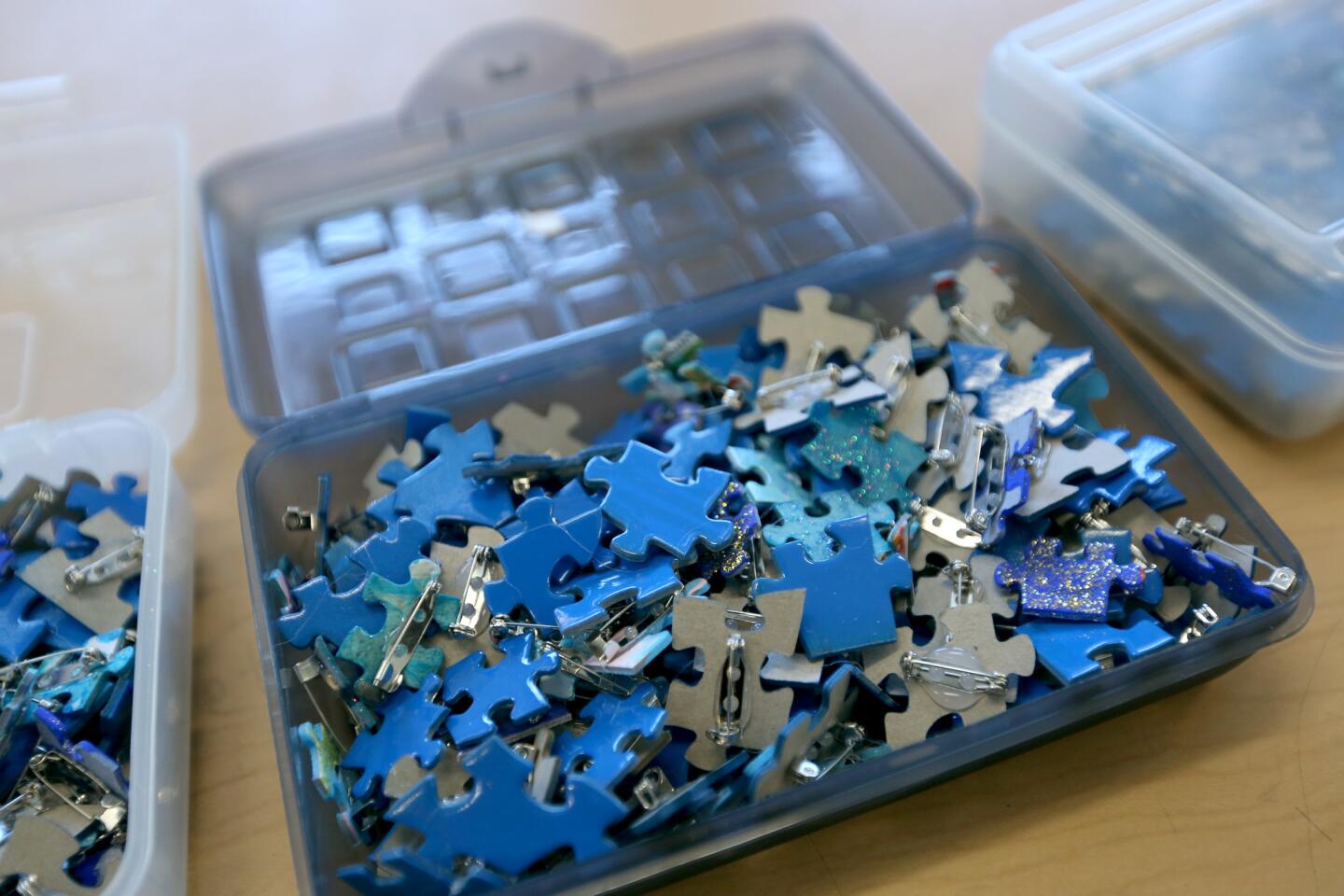Students with autism at Jordan Middle School celebrate inclusion, success with puzzle pin
- Share via
As the lunch bell sounded this past Tuesday afternoon, students filed into room No. 408 at David Starr Jordan Middle School.
Many were dressed in various shades of blue: azure, turquoise, denim and standard royal, to name a few.
Some students walked through the doors of the headquarters for Jordan’s autism program needing minimal assistance, using the computers or conversing with teachers and friends, while others required significant help.
All who entered, however, picked up a blue puzzle-piece pin to wear, not just for that Tuesday, which was World Autism Awareness Day, but all month long because April is Autism Awareness Month in the Burbank Unified School District.
“They can wear them on their shirt, on their backpack, and they can take them to family members if they want,” said Jordan’s education specialist Britta Davidson, who oversees the school’s autism program. “It’s for everyone.”
The puzzle piece dates back to 1960s England and roughly represents a child with autism’s struggle to find their place in society. The color blue was later adopted by national autism groups, such as Autism Speaks.
Davidson has 16 students with autism in her class who range in abilities like the different shades of blue worn on Tuesday.
“We have students in here from [those with intensive needs] to the gifted,” Davidson said. “They’re just students who need extra help because of autism. It’s really neat to have this level of support ... where everyone is welcome.”
Davidson said 800 pins were ready to be distributed immediately and that some of her students had already passed out the mementos to teachers, staff and administrators earlier that day.
Seventh-grader Abbas Darwich zipped into class during lunch to pick up his pin, which was nearly camouflaged against his blue sweater.
“The autism program at Jordan is very helpful to all the children that need that special extra little help,” said Darwich, a straight-A student. “A lot of children were struggling, but now they all have a chance to thrive in a community where everyone is welcome.”
While students were picking up pins, a video played on loop in the background explaining autism and some negative connotations some people have about it.
Madeline Hornbeck, 13, watched intently and slightly winced when a child in the film mentioned being labeled with the “R-word” autistic slur.
“This pin is for caring people and for people who don’t make fun of people with autism,” she said. “I’m special because I have autism. Sometimes it can be helpful and sometimes it can be hurtful.”
She added, “Either way, I’m still human.”
April Weaver, the school’s assistant principal, estimated 40 to 50 students at Jordan are autistic.
“Our goals for the children are to develop career and social skills,” Weaver said. “We want to cultivate independence and good vocational skills.”
One way the school fosters growth and development is through the Cougar Coffee Cart, where autistic students sell coffee to teachers and staff schoolwide.
“They collect money, they hand out coffee,” Weaver said. “Everyone loves it.”
School psychologist Veronica Barragan said she thinks the puzzle-piece pin also represents unity.
“For the school, it’s a symbol of our efforts to include students and make sure everyone is involved,” Barragan said.
The success of the autism program has extended to non-autistic students, such as eighth-grader Oliver Piccioni.
The 13-year-old teacher’s assistant suffered from behavioral problems at a younger age but found understanding in room No. 408.
“I heard about the autism program but didn’t know really anything about it until I signed up to help in September,” Piccioni said. “Working with these students, my friends, it’s been important. They’re great, and they just need a little help, just like I did.”






